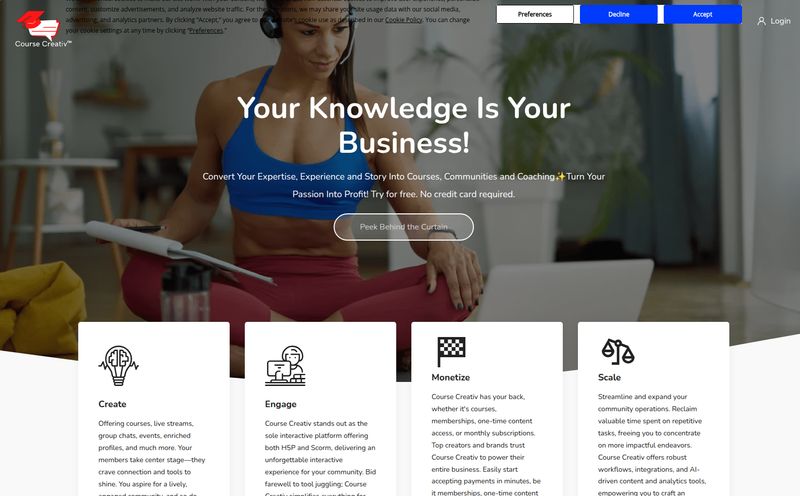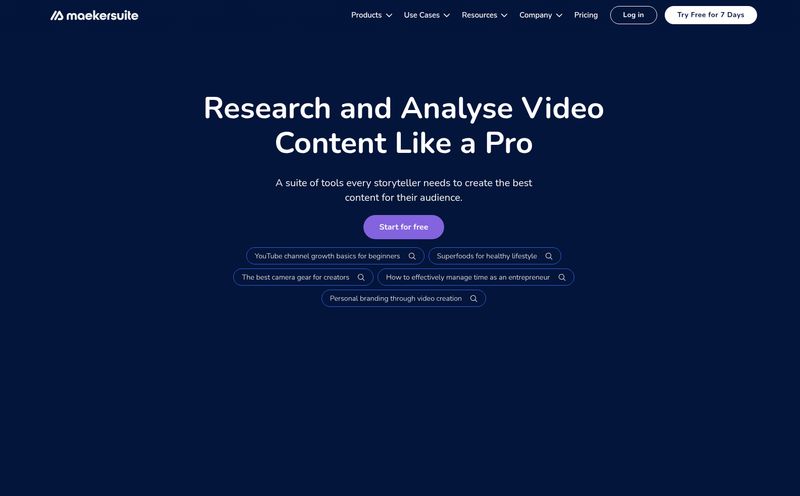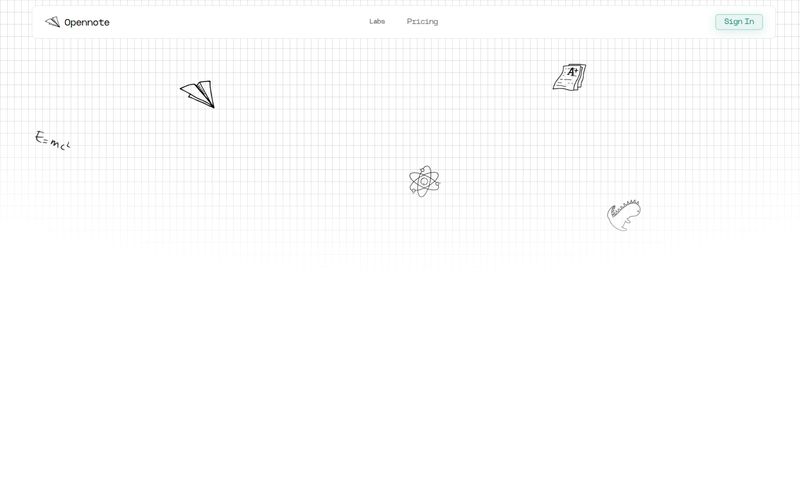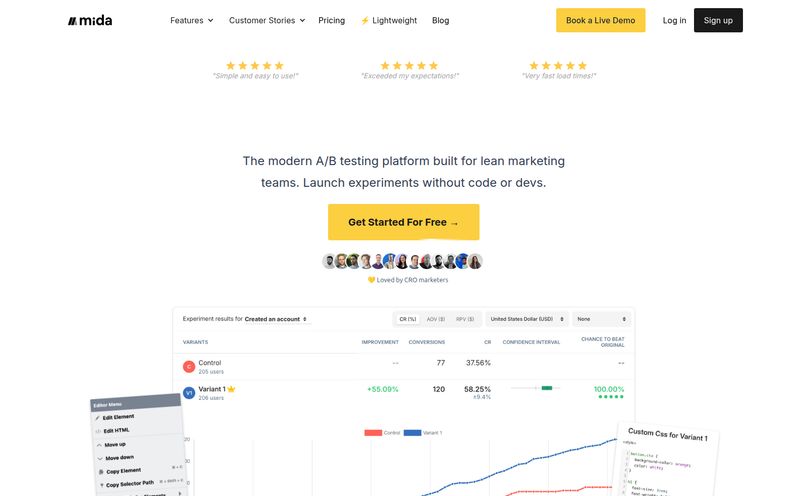That Shiny New AI Tool No One is Using
You’ve done it. The company has shelled out a small fortune for Microsoft 365 Copilot licenses. You’ve seen the demos, you’ve read the case studies, and you're buzzing with the potential for a productivity revolution. There’s just one tiny, insignificant, microscopic problem… nobody is using it.
Sound familiar? I thought so. It’s the classic story of the digital age. We roll out incredible technology, but the user adoption curve looks more like a flatline. The tool becomes a digital ghost town, a line item on an expense report that makes CFOs twitch. Employees are creatures of habit, and breaking them out of their well-worn grooves to adopt something as newfangled as an AI assistant can feel like pushing a boulder uphill. In the rain. Both ways.
This is precisely the headache a platform called Let's Copilot promises to cure. And their method is, honestly, pretty smart: they’ve turned the whole learning process into a game.
So, What is Let's Copilot Exactly?
Imagine if your mandatory HR training was actually… fun. Okay, maybe that’s a stretch, but you get the idea. Let's Copilot isn't another PDF manual or a series of snooze-inducing webinars. It’s a fully interactive and gamified application that lives directly inside Microsoft Teams. Its entire purpose is to get your team from “What’s a Copilot?” to “How did I ever live without this?”
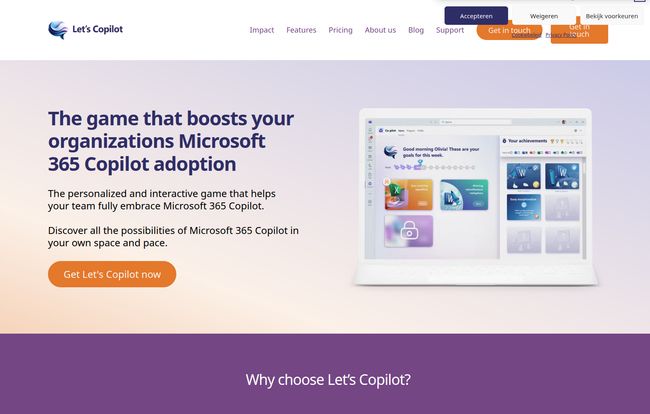
Visit Let's Copilot
It’s designed as a hands-on journey. Through a series of tailored lessons, practical exercises, and challenges, it teaches employees the skills and—more importantly—the mindset needed to work effectively with their new AI partner. It’s less about just showing them which buttons to click and more about changing how they approach their work. It's like giving them the training wheels for a rocket ship.
Why Gamification is The Secret Sauce for AI Adoption
I’ve been in this industry long enough to see countless training programs fail. They’re often boring, generic, and completely detached from the daily workflow. Let’s be real, no one gets excited about a mandatory 2-hour video lecture.
Gamification flips the script. By adding elements like points, badges, and leaderboards, it taps into our natural human desire for competition and achievement. It turns a chore into a challenge. Let's Copilot's approach is built on a few core ideas that I think really hit the mark.
Personalized Learning, Not a One-Size-Fits-All Bore
The platform doesn’t just throw the same content at everyone. It offers tailored lessons and exercises. This means your marketing team can learn about generating creative copy with Copilot, while your finance team can focus on data analysis and forecasting. This personalization is a game-changer. It makes the learning immediately relevant, which dramatically increases the odds that people will actually pay attention and apply what they’ve learned.
It Lives Where Your Team Lives: Inside Microsoft Teams
This is a big one. One of the biggest barriers to using a new tool is… well, having to open yet another tool. By integrating directly into MS Teams, Let's Copilot removes that friction. It’s right there, inside the application your team already has open all day. This seamless integration makes the training feel less like a separate task and more like a natural part of the workday. It's a simple idea, but its impact on engagement is massive.
Let's Talk Numbers... And The Curious Case of the Zeros
Alright, so on their website, there’s a section that lists some pretty interesting stats: 0% weekly active users, 0 hours saved per week, 0% of players would recommend it. My first thought? “Whoops, someone forgot to update the template.”
But then I thought about it a bit more. Maybe it's not a mistake. Maybe it's a bit of a flex. A tongue-in-cheek way of saying the results will be so good, they speak for themselves once you're in. Or maybe, just maybe, they’re a new company and are still gathering the data. Whatever the reason, it's a quirky detail that honestly made me chuckle. It feels refreshingly human in a world of polished, exaggerated marketing claims. It's a bit of an odd choice, I'll admit, but it stands out.
Who Is This For? And What’s the Investment?
Let's Copilot is for any organization, big or small, that is investing in Microsoft 365 Copilot and wants to ensure they get a return on that investment. If you're worried about your expensive licenses gathering digital dust, this is for you. The pricing is tiered, which I appreciate. It makes it accessible for teams of all sizes.
| Team Size | Price per User/Year | Notes |
|---|---|---|
| 1-10 Users | €48.00 | Great for small teams or pilot programs. |
| 11-100 Users | €45.00 | A slight discount for growing businesses. |
| 101-1000 Users | €44.00 | Standard for mid-sized organizations. |
| 1000+ Users | Custom Pricing | Enterprise-level with volume discounts. |
An important thing to remember: this is a complement to your Microsoft 365 Copilot subscription. You still need to buy the actual Copilot licenses from Microsoft. This tool is the training program, not the AI itself.
A Few Things to Keep in Mind
No tool is perfect, and a balanced look means considering the potential hurdles. For Let's Copilot, its success really hinges on employee engagement. While gamification is a powerful motivator, you still need buy-in from your team. If you have a culture that's super resistant to change, even a fun game might face some initial friction. Also, like any app integrated into Teams, there's going to be some initial setup and configuration. It doesn't look overly complicated, but it’s not just a magic switch you flip.
My Final Take on Let's Copilot
In my experience, the biggest threat to ROI for any new software is non-adoption. You can have the most powerful tool in the world, but if your team doesn't know how to use it—or why they should—it’s worthless.
Let's Copilot tackles this problem head-on with a creative and modern approach. I’m a big fan of the gamification and the seamless MS Teams integration. It shows a deep understanding of how people actually work and learn today. The price seems reasonable, especially when you weigh it against the cost of unused Copilot licenses. If you're planning a Copilot rollout, investing a little extra in a tool like this to ensure it actually sticks seems like a no-brainer to me.
Frequently Asked Questions about Let's Copilot
- 1. Do I need a Microsoft 365 Copilot license to use Let's Copilot?
- Yes, absolutely. Let's Copilot is a training and adoption platform for Microsoft 365 Copilot. It teaches your team how to use the AI, but it doesn't include the AI itself. You'll need to purchase your Copilot licenses separately from Microsoft.
- 2. Is Let's Copilot suitable for large enterprises?
- It certainly seems to be. While they have clear pricing for teams up to 1000 users, they also offer custom plans and volume discounts for larger organizations with more than 10,000 users. It's designed to scale.
- 3. How does the gamification work?
- It turns the learning process into an interactive game. While specifics aren't detailed, gamified systems typically involve earning points for completing modules, unlocking badges for mastering skills, and friendly competition via leaderboards. The goal is to make learning engaging and rewarding.
- 4. How long is the licensing term?
- The standard pricing is for a 1-year license per user. For larger corporate deals, the terms might be more flexible, but the base offering is an annual subscription.
- 5. Is there a free trial available?
- The website doesn't explicitly mention a free trial on the main pages. Your best bet would be to use their "Get in touch" or "Get Let's Copilot now" options to inquire directly about pilot programs or trial possibilities.
Conclusion
The success of AI in the workplace won't be determined by the power of the algorithms alone, but by our ability to integrate them into our daily routines. Tools like Microsoft Copilot are powerful, but they require a new way of thinking. Let's Copilot offers a playful, engaging, and practical bridge to get your team there. It’s an investment in your people, and in the AI-driven future you’re trying to build.
